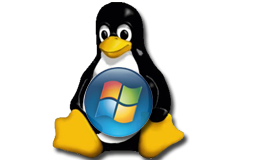Microsoft Gives 20,000 Lines of Code to Linux
That's right, Microsoft's giving something to Linux. For free.
Despite Microsoft being what it is and generally distant from the Linux community, the software giant this week released 20,000 lines of device driver code to the Linux kernel community for inclusion in the Linux tree.
The code is for three Linux device drivers, which will enhance the performance of the Linux operating system when virtualized on Windows Server 2008 Hyper-V or Windows Server 2008 R2 Hyper-V.
"This is a significant milestone because it’s the first time we’ve released code directly to the Linux community. Additionally significant is that we are releasing the code under the GPLv2 license, which is the Linux community’s preferred license," said Tom Hanrahan, director of Microsoft's Open Source Technology Center (OSTC). "Our initial goal in developing the code was to enable Linux to run as a virtual machine on top of Hyper-V, Microsoft’s hypervisor and implementation of virtualization."
"The Linux device drivers we are releasing are designed so Linux can run in enlightened mode, giving it the same optimized synthetic devices as a Windows virtual machine running on top of Hyper-V," Hanrahan added. "Without this driver code, Linux can run on top of Windows, but without the same high performance levels."
Essentially, Microsoft releasing Linux drivers was still in the interest of keeping its customers happy to use Windows.
Hanrahan explains, "Customers have told us that they would like to standardize on one virtualization platform, and the Linux device drivers will help customers who are running Linux to consolidate their Linux and Windows servers on a single virtualization platform, thereby reducing the complexity of their infrastructure.
"So there’s mutual benefit for customers, for Microsoft, and for commercial and community distributions of Linux, to enhance the performance of Linux as a guest operating system where Windows Server is the host."
Get Tom's Hardware's best news and in-depth reviews, straight to your inbox.
-
audioee Did hell just freeze over? Oh wait, that will happen when the Chicago Cubs win the World Series!!Reply -
maigo No, hell did not freeze over. You'll need a copy of Windows and a license to run the virtualization. They've just gotten a bunch of LINUX users to install Windows. Instant money!Reply -
nekatreven This is a good thing, but Microsoft is still doing much more "lets make their stuff work with Windows" than they are "lets make our stuff work with Linux".Reply
I'm holding onto my bricks until they do a bit more of the latter. -
megamanx00 Latter they will probably say "Hey, Linux is using some of our patents. The fact that we put them there is besides the point".Reply

